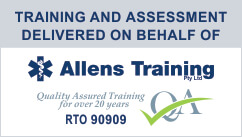Northern Beaches First Aid Course – Allergy and Anaphylaxis
Simple Instruction – Provide First Aid and CPR courses that cover the management of allergies and anaphylaxis. The HLTAID004 Provide an emergency first aid response in an education and care setting and HLTAID003 Provide First Aid courses develop ones knowledge and understanding of common allergies and what to do next. Come along to one of our first aid or CPR training courses at the Dee Why RSL on the Northern Beaches, Sydney to help promote safe practices.
Please see the post below originally published on: https://allergyfacts.org.au/allergy-anaphylaxis
An allergy, is an overreaction by the body’s immune system to a normally harmless substance. Substances that can trigger an allergic reaction are called allergens. Allergens may be in medication, in the environment (eg. pollens, grasses, moulds, dogs and cats), or proteins (most often) in the foods we eat. Individuals can have mild/moderate or severe allergies.
Allergies should not to be confused with an intolerance, which does not involve the immune system – see Food Intolerance.
In Australia allergies are very common. Around one in three people will develop allergies at some time during their life. The most common allergic conditions are food allergies, eczema, asthma and hay fever. Food allergy occurs in around ten percent of children¹ and approximately two percent of adults.
Having a food allergy means that when you eat a food containing that protein (allergen), the immune system releases massive amounts of chemicals, triggering symptoms that can affect a person’s breathing, stomach and gut, skin and/ or heart and blood pressure.
The same immune response occurs in drug allergy when a drug is ingested or injected and in insect allergy when a sting or bite occurs. There are also less common allergens that can also cause such an immune response.
For someone with a severe allergy, exposure to the allergen can cause a life-threatening reaction called anaphylaxis. Anaphylaxis affects the whole body, often within minutes of exposure.
Signs of a mild to moderate allergic reaction are:
Swelling of the lips, face, eyes
Hives or welts
Tingling mouth
Abdominal pain, vomiting (these are signs of anaphylaxis for insect allergy)
Signs of anaphylaxis (severe allergic reaction) are:
Difficult/noisy breathing
Swelling of tongue
Swelling/tightness in throat
Wheeze/persistent cough
Difficulty talking and/or hoarse voice
Persistent dizziness or collapse
Pale and floppy (young children)
¹Osborne et al. Prevalence of challenge-proven IgE-mediated food allergy using population-based sampling and predetermined challenge criteria in infants. J Allergy Clin Immunolol 2011; 127: 668-676
Content updated January 2017
